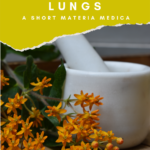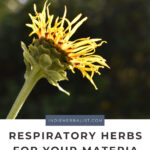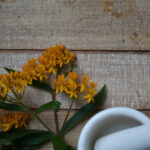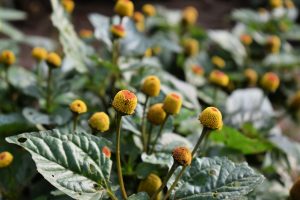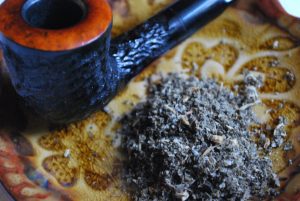Links contained in this post and elsewhere on my website may include affiliate links. When you make a purchase through these links, I earn a commission at no additional cost to you. I only link to products and services that I love - and that I think you will love, too!
It’s almost cold and flu season, so it’s a great time of year to discuss herbs for lung health! There are quite a few categories we could look at in this case. For today’s post, let’s examine some herbs that have a traditional record of use for acute illness that affects the lungs and/or have a tonifying role in respiratory health.
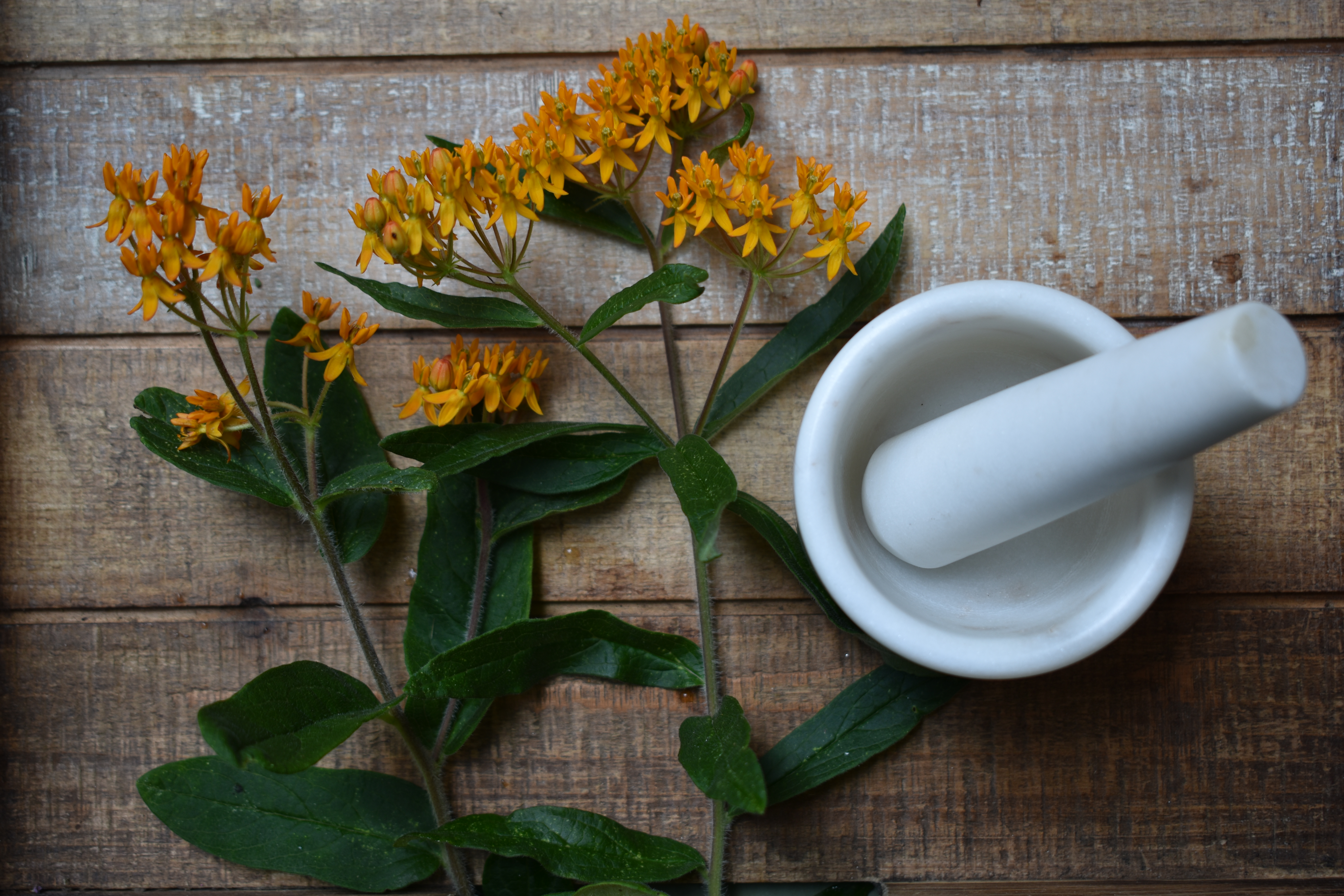
My top five herbs for this category are:
- elecampane
- ground ivy
- butterfly weed
- violet
- mullein
A materia medica of herbs for the lungs
These herbs are very easy to grow if you have room for a garden. Except for ground ivy, they are all easy to find in commerce. Like most herbs, they are quite versatile. For now, though, let’s focus on how they are used to support lung health.
Elecampane (Inula helenium)
Elecampane is an ally for lung irritations, spasms, and coughs that have become chronic. It is equally applicable for acute situations. Traditional uses for elecampane include asthma, tuberculosis, pertussis, and bronchitis (Hoffman, 2003.)
It may also be supportive for coughs from influenza and common cold, and as a nutritive to support overall strengthening for people with chronic lung problems (Bone, 2003). Elecampane is also a bitter herb that supports the digestive and lymphatic systems. It is considered a tonic for the mucus membranes in both the lungs and the digestive tract.
Parts used
The dried root or the flowers. In Western herbalism, it’s most common to use the root. Elecampane roots grow very large and, in my experience, yield well in home gardens. The flowers are used in TCM (Wood, 2008).
Preparation Notes
According to Hoffman in his textbook, Medical Herbalism, use a cold brew method to make the infusion if you can. Use 1 tsp of shredded root to one cup of cold water per serving and allow the root to soak for 10 hours. Then heat and serve very warm.
This method is very good for herbs like marshmallow and elecampane where many of the most effective compounds are in mucilage produced by the roots. For an alcohol extract, a 1:5 in 40% is appropriate. For adults, 1ml to 2ml up to 3x per day may be used.
Safety Considerations
This herb is from the Asteraceae family, so if you have allergies to members of this family this might not be a good herb for you. Safe for children (Hoffman, 2003).
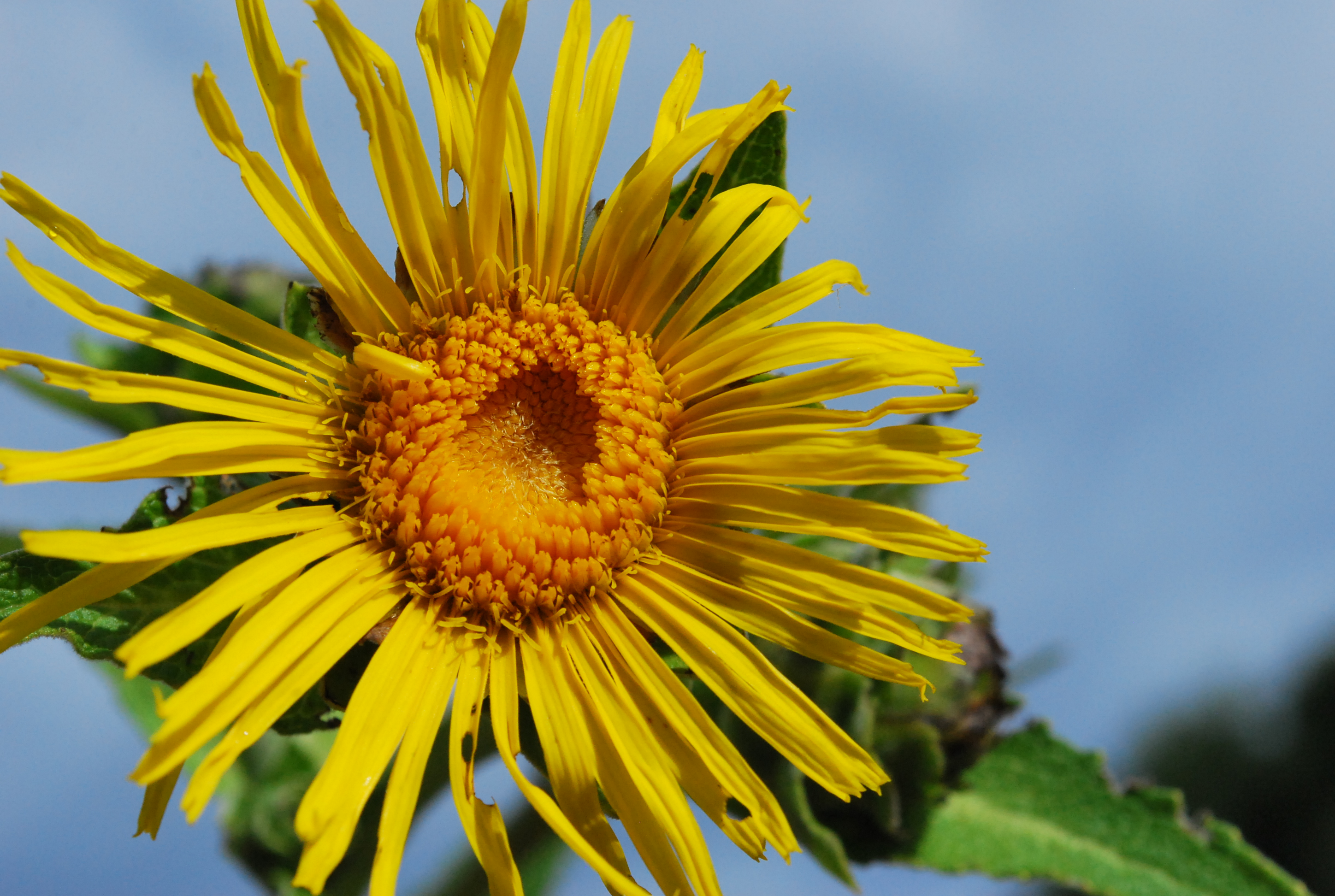
Ground Ivy (Glechoma hederacea)
Ground ivy has a spicy, strong aroma. Energetically, it’s drying and cooling so is best used for hot, wet coughs. It’s a great herb to have on hand for head colds. I find that it also dries up congestion in the upper-respiratory tract that has settled in the ears. Wood writes about it in The Earthwise Herbal. It grows as a lawn weed in many places, just like violets.
Part Used
The leaves and flowers.
Preparation Notes
Matt Wood, in The Earthwise Herbal, recommends 3-30 drops of the herb extracted fresh. I use a teaspoon of the dried herb in a cup of water when I make tea.
Safety Considerations
None known.
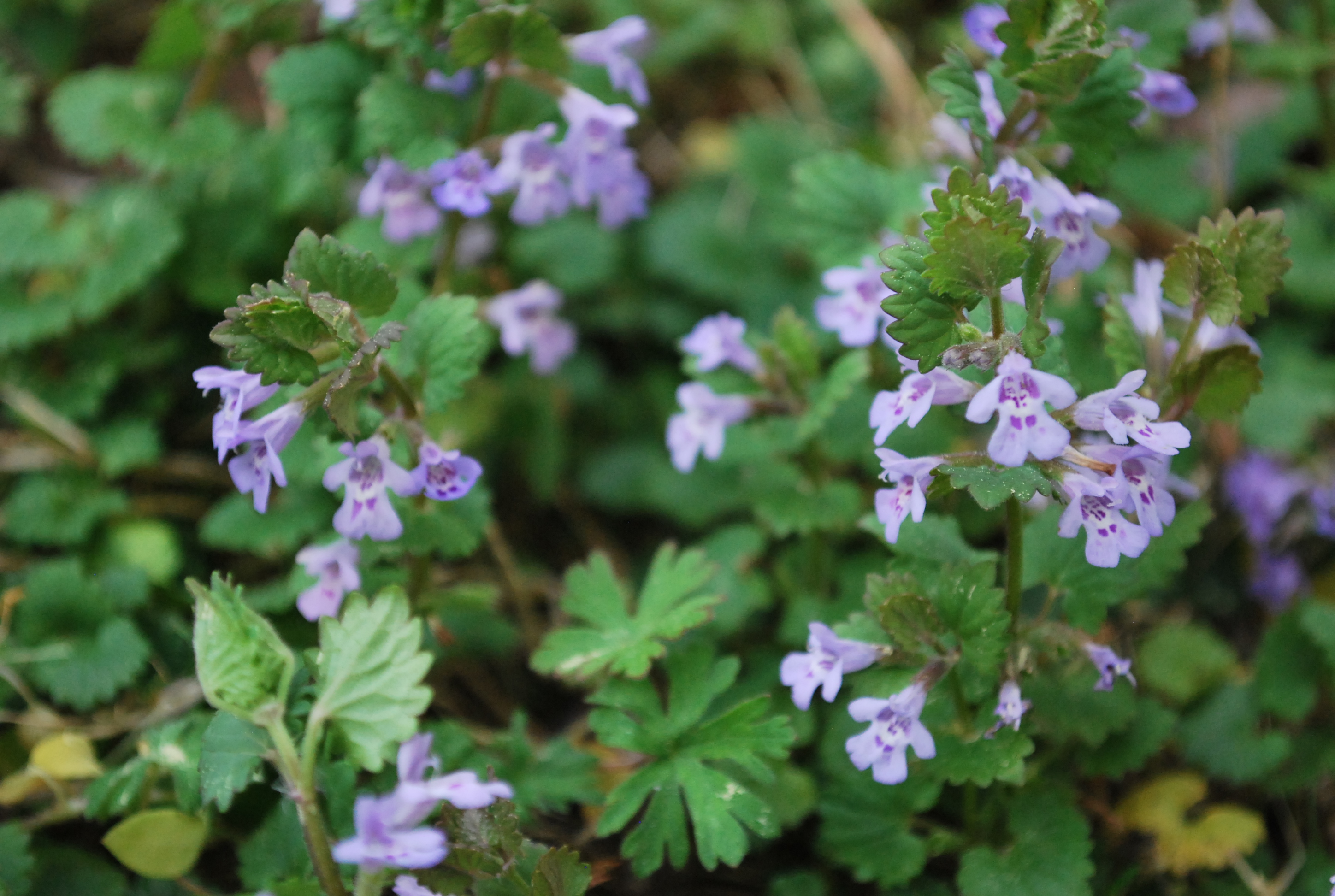
Butterfly Weed (Asclepias tuberosa)
In the past, this herb found employment for bronchitis, influenza, and pneumonia. It’s antispasmodic, diaphoretic, expectorant, and anti-inflammatory (Hoffman), which makes it a superb ally for many types of respiratory imbalances. Butterfly weed has gorgeous orange flowers that bloom in the summer. It makes a lovely addition to a native plants garden as well as an herb garden.
Part used
The root.
Preparation Notes
According to Hoffman, a 1:5 extract in 45% alcohol is ideal for the dried root. 1 to 2 ml of the extract taken up to 3x a day. I serving of the decoction is 1tsp of the dried root in 1 cup of water.
Safety Considerations
Butterfly weed may increase risk of toxicity if combined with medicine or herbs that contain cardiac glycosides.
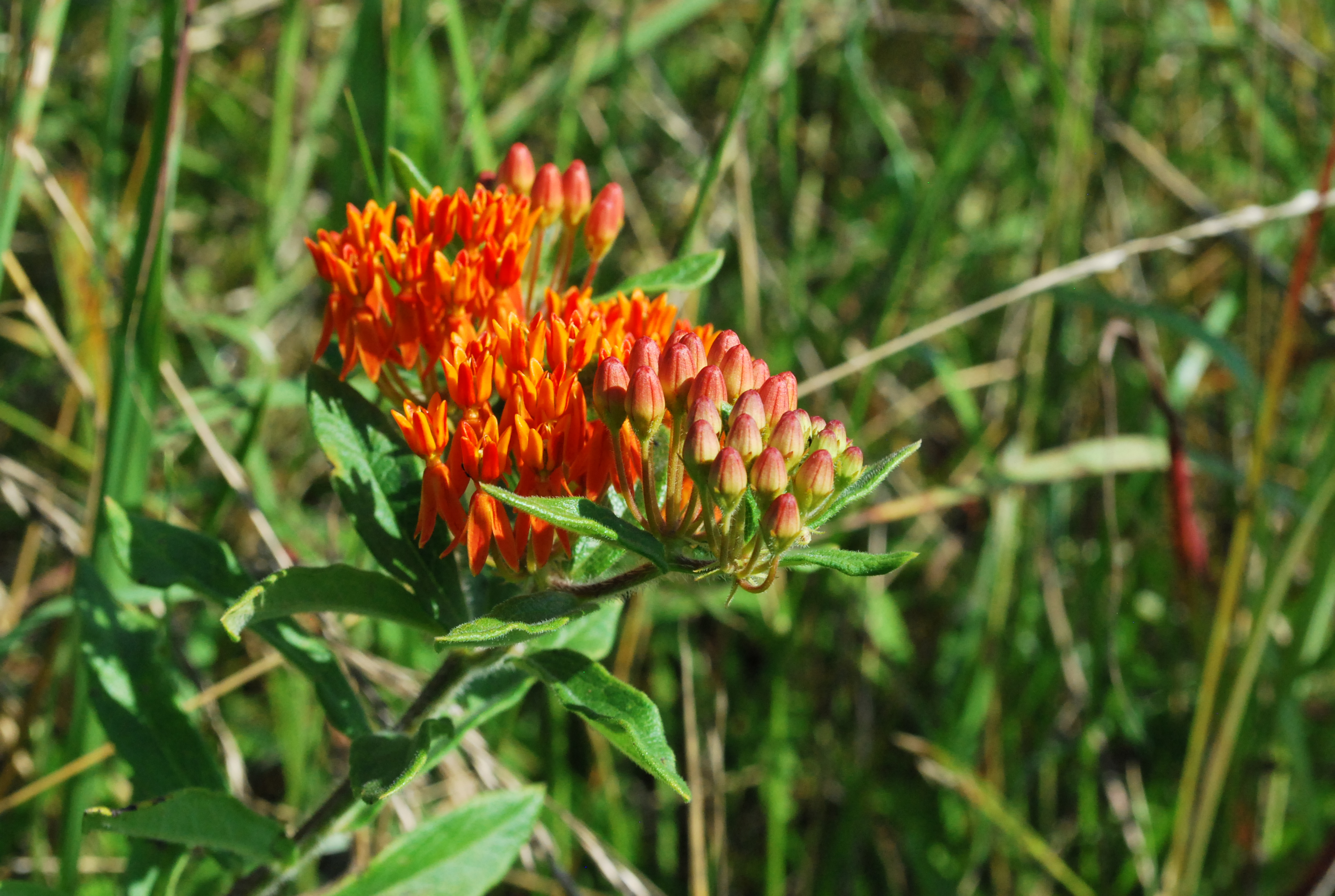
Violet (Viola odorata)
The unassuming bane of suburban lawns, violet is a marvelously cooling and moistening herb for the lungs. Violet is safe for children. Combining equal parts violet leaf tea and honey makes an easy syrup. Find my directions in this article, Quick and Easy Violet Syrup. Like mullein and elecampane, violet has an affinity for the lymphatic system. Violet is an ally for dry coughs or lung conditions with excessive dryness.
Parts used
The leaves and flowers.
Preparation Notes
Use violet as a tea or an extract. Hoffman recommends a 1:5 in 40%. A serving of extract is 1ml to 2ml. The serving size for an infusion is 1 teaspoon of dried herb to 1 cup of water. The extract or infusion may be taken up to 3x a day.
Safety Considerations
Don’t use the root and seeds because they are emetic.
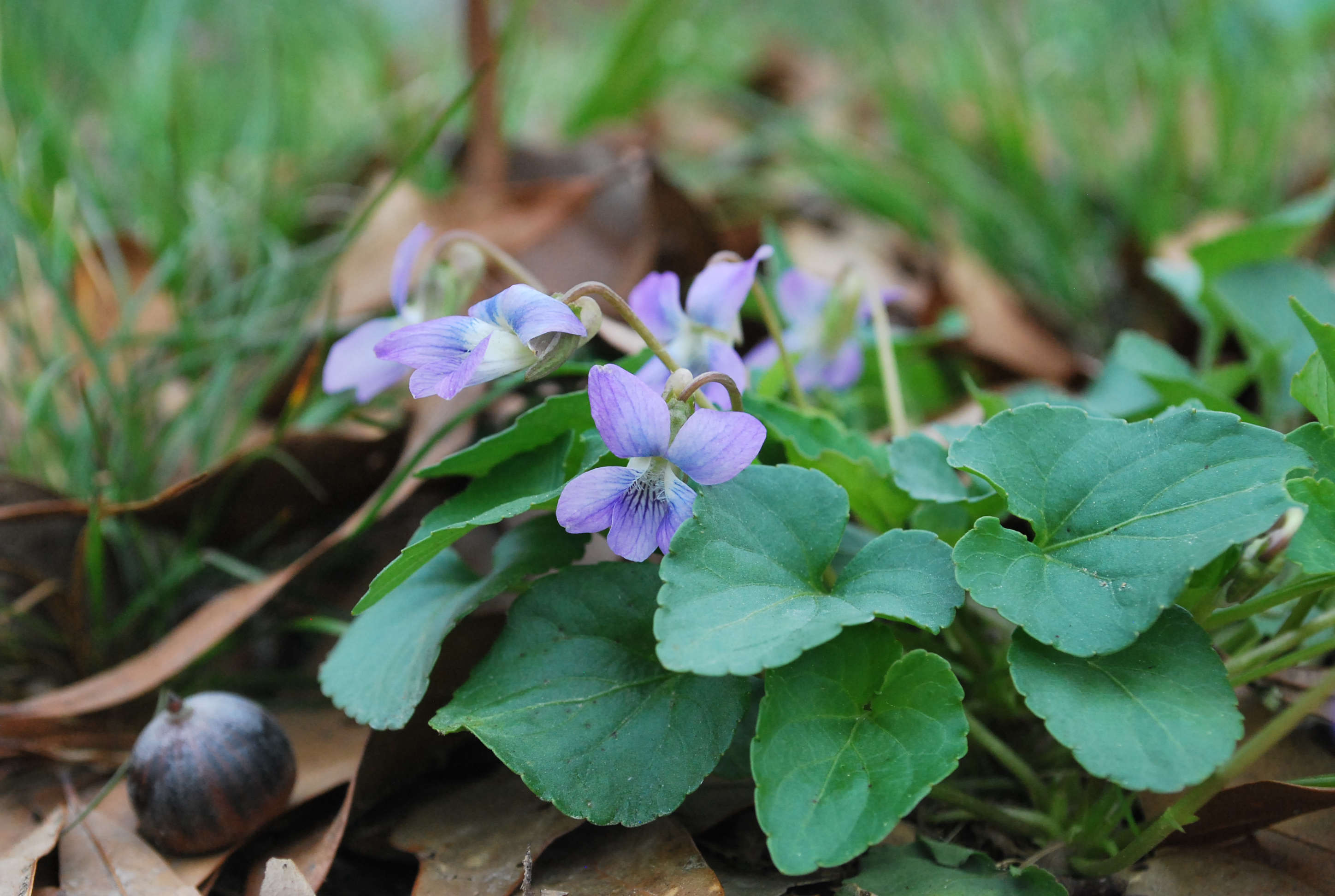
Mullein (Verbascum thapsus)
Like elecampane, mullein is tonifying for the respiratory tract and has an affinity for the lymph glands. It is a traditional expectorant and antispasmodic. Wood writes that it is particulary useful for dry, irritated coughs. Mullein balances the fluids by drawing fluid from where it’s not supposed to be and restoring it where it is lacking. Specific when there is a feeling of tightness in the chest, and like elecampane it strengthens and nourishes.(Wood, 2008)
Parts Used
Mullein leaf and flower are beneficial for respiratory health. The root is used by modern herbalists for kidney and bladder health and for structural support of the spine.
Preparation Notes
Hoffman suggests 2.5ml – 5 ml, 3x a day for 1:5 in 40%. A serving of infusion is 1 cup water to 2 tsp of dried leaf or flower. However, I recommend you strain your mullein tea through a coffee filter or muslin. The leaves and flowers have fine hairs that feel prickly in your mouth and throat!
I have a guide on making mullein tea in this article.
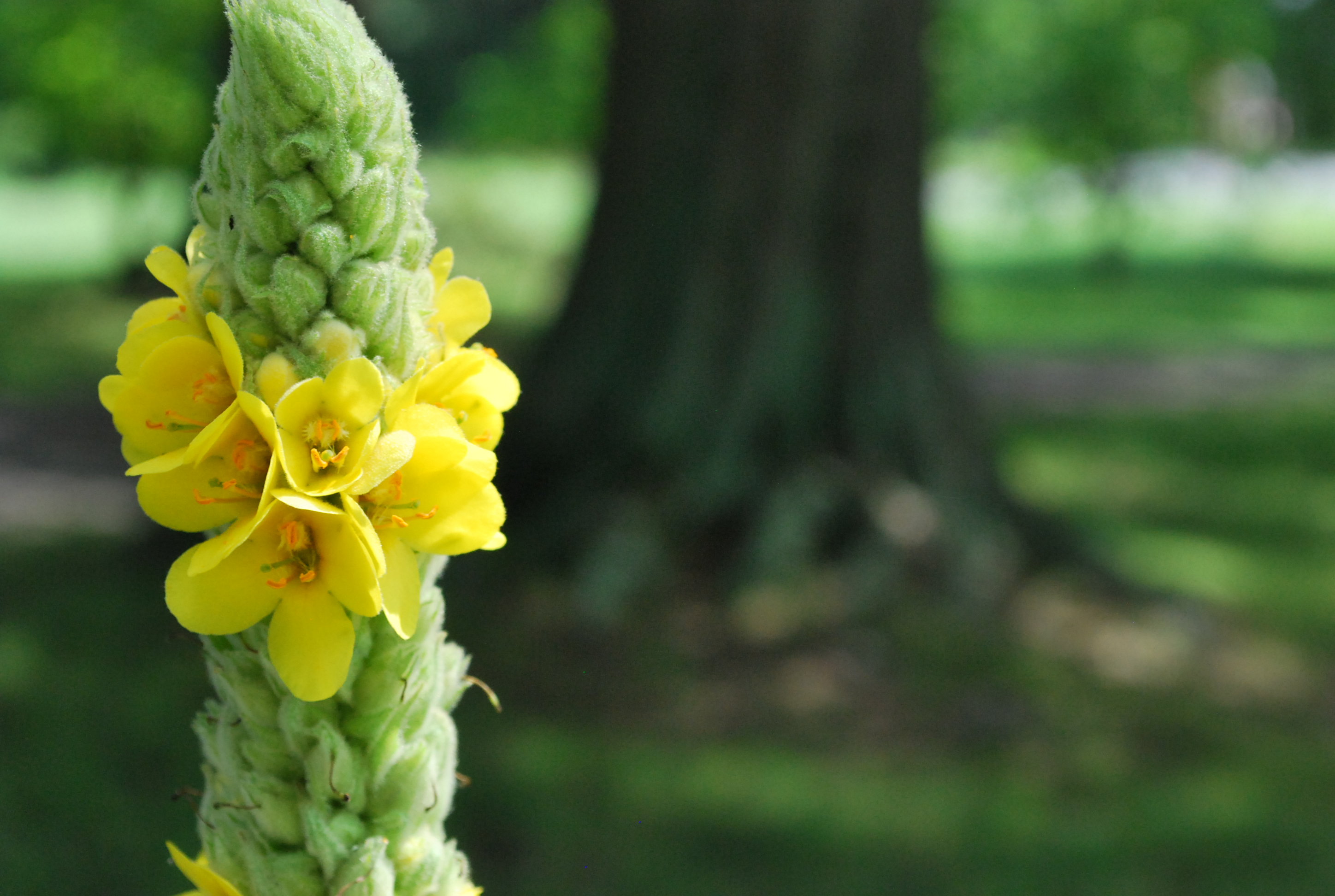
Of course, there are many other herbs that could be included in the category for respiratory health. However, these five are reliable, easy to grow, and easy to find at herb shops. They work well as simples or as part of a blend, so I think they are important herbs for home herbalists to know!
References
Hoffman, D. (2003) Medical Herbalism: the Science and Practice of Herbal Medicine. Rochester, VT. Healing Arts Press.
Wood, M. (2008). The Earthwise Herbal: A Complete Guide to Old World Medicinal Plants. Berkeley, CA. North Atlantic Books.
About Me
I’m an herbalist and author from Atlanta, Georgia. Thanks for visiting my blog! My popular herbal recipe book is full of creative ideas for supporting wellness with adaptogens like rhodiola, holy basil, and ashwagandha. You can learn more about my book here. It’s available for purchase through Amazon, Barnes and Noble, or by request at your favorite local book shop!
If you are interested in taking your herbal studies to the next level, I recommend online courses by The Herbal Academy (#affiliate). I was part of the writing team for the Advanced Course.
